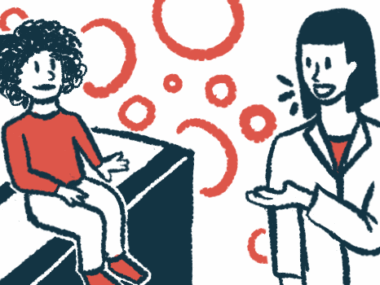Youngest child to get Kebilidi gene therapy now walking, talking
Toddler received treatment at 16 months in clinical trial
Written by |

Two years after treatment with the gene therapy Kebilidi (eladocagene exuparvovec-tneq), Sriansh Ojha, a toddler with AADC deficiency, is walking and talking.
Sriansh received Kebilidi in 2022 as part of the Phase 2 clinical trial (NCT04903288) that formed the basis of the U.S. Food and Drug Administration (FDA)’s recent decision to approve the gene therapy. At the time he was treated, he was just 16 months old, making him the youngest person ever to receive treatment with Kebilidi.
“Gene therapy is a blessing I must say,” Bhawana Dhakal, the boy’s mother, said in a news story from Cincinnati Children’s Hospital Medical Center, which is where he underwent treatment. “You can see my child, before and after, and see that it works. He’s a new person. He has a new life.”
AADC deficiency is a genetic disorder caused by mutations in the gene DDC, which provides instructions to make the AADC enzyme. This enzyme is needed to make certain neurotransmitters (brain signaling molecules) such as dopamine and serotonin. In AADC deficiency, lack of the enzyme leads to disruptions in brain signaling.
Like most people with AADC deficiency, Sriansh first started to show symptoms of the disease when he was just a few months old. In his first year of life, he struggled to eat, couldn’t lift his head, and could not control his eye movements. “He had eye deviations, an arching back, and he used to sleep a lot,” Dhakal said. “He was only awake like one or two hours and then would go back to sleep.” An aunt and a neighbor remarked that something was wrong “because normally kids don’t twist their hand and arm the way he did,” she said.
‘Amazing’ treatment
Kebilidi, developed by PTC Therapeutics, works to deliver a working copy of the DDC gene to brain cells, allowing production of a functional AADC enzyme and ultimately facilitating better neurotransmitter production.
“The way that a missing gene can be put in the brain in the place where it’s needed, in a single-day treatment, and then produce what is needed for the rest of a child’s life is amazing,” said Donald Gilbert, MD, a clinician at Cincinnati Children’s who played a central role in treating Sriansh.
Kebilidi has been approved since 2022 in the European Union and the U.K., where it’s marketed under the name Upstaza. It was first developed in Taiwan, where it entered clinical testing in 2010. To date, about 30 children with AADC deficiency have received the treatment.
In the absence of treatment, people with AADC deficiency usually cannot speak and have minimal ability to move under their own power. In sharp contrast, at a follow-up visit when he was 2 years old, Sriansh was squealing and running around with his older sister. Getting treatment so early likely contributed to the extraordinary results, according to clinicians.
“When they were working out how to do it in Taiwan, how much virus to give, and so on, all the children were older,” Gilbert said. A girl who had the surgery at about 20 months is “also running around like he is,” Gilbert said.
Seeing the dramatic change in Sriansh following gene therapy has left a profound impact on the doctor. “When I walked in and saw him, sitting up, completely on his own … I will never forget that,” Gilbert said.
Sriansh, now 3, is starting to talk, though his speech isn’t currently up to the level that might be expected for a typically developing child.
“He says Mama, Baba, Dada and he calls his sister DeeDee,” Dhakal said. “But his words are not clear. He also tries to copy words we say. I think that is very promising. At least he’s trying and that’s why I’m really happy.”
The gene therapy is administered directly into the brain through a surgical procedure. Doing the procedure in a 16-month-old required special considerations, such as determining how to safely get through the boy’s skull and the right regimen of anesthesia to use. Sudhakar Vadivelu, DO, director of the Cerebrovascular Disease and Stroke Center at Cincinnati Children’s, led the task of adapting the procedure.
“It’s one thing to say you have a 14-year-old or an 8-year-old,” Vadivelu said. “It’s another thing to say you have an 8-month-old or a 16-month-old. Adapting the procedure for the youngest children was important because the youngest patient has had one of the best outcomes. It’s a clear early difference right off the bat.”
For Sriansh’s family, the gene therapy has been life changing. “I think it’s a miracle,” Dhakal said. “It was a rough time, but it was worth it. I knew that no matter what I was going to try to save my child. This sounds funny but deep down I knew my child would be OK.”






